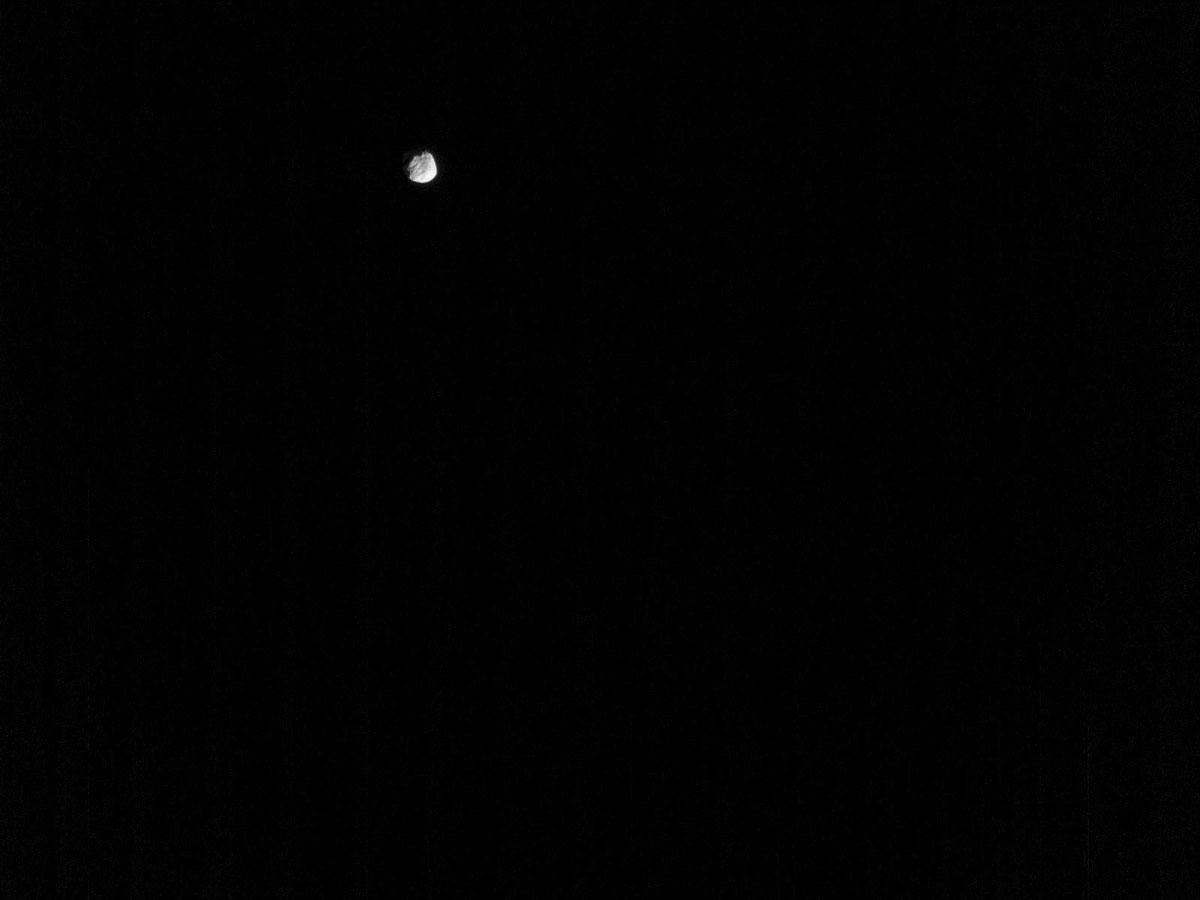3 min read

You stand in Jezero crater, Mars, at a minute to midnight. By the light of the stars and Mars’s two tiny moons, Phobos and Deimos, you can just make out the shape of the looming delta. Nothing moves; the wind tonight is too low to even push a sand grain over. All is peaceful and quiet. Then, out of nowhere, comes an alien, mechanical whirring noise... and a misshapen head rises up out of the darkness, its five eyes glinting menacingly.
But have no fear: this isn’t a ghostly monster or a vengeful Martian, but rather Perseverance going about its regular business!
In general, Perseverance carries out most of its activities during the daytime. This is partly because the rover needs light for taking images or driving using auto-navigation, but also because there is more power available. Once night falls, so do temperatures, which means that more power is needed to keep things warm, leaving less for science. However, you might be surprised by how much Perseverance does do at night.
For one thing, the Mars Environmental Dynamics Analyzer (MEDA) continues to take weather data overnight. MEDA observes bursts of turbulence, winds linked to flows down the nearby crater rim, fluctuations in water vapor abundance, and nighttime variations in the amount of dust and water ice in the atmosphere above us.
The SuperCam microphone also regularly makes three-minute sound recordings at very high frequencies overnight, which tells us a lot about small-scale atmospheric turbulence.
The Mars Oxygen In-Situ Resource Utilization Experiment (MOXIE) also generally schedules its oxygen generation runs at night. This is largely because air temperatures are much lower then, which - because density is proportional to pressure divided by temperature - means the air is densest at night. That increases the amount of oxygen MOXIE can generate from Mars’s carbon dioxide atmosphere, and a recent MOXIE nighttime run timed to coincide with the seasonal peak in surface pressure produced 10.4 grams of oxygen per hour, the highest rate so far!
The Scanning Habitable Environments with Raman & Luminescence for Organics & Chemicals (SHERLOC) instrument also operates at night. This is because operating at night provides the least instrument noise and thus the most sensitive detections.
As for the five-eyed monster at midnight? Well, that would be the top of the articulated remote sensing mast getting into position, so that Mastcam-Z can image Phobos (see image). This provides a measurement, using visible light, of the amount of dust in the nighttime atmosphere, which can be compared to similar measurements made by looking at the sun during the daytime, and to nighttime measurements of dust abundance made in the infrared by MEDA.
It’s a busy life! But in fact, Perseverance isn’t the only one working at all hours. Back here on Earth, rover operations shifts can start as early as 6am Pacific Time, which means that Mars 2020 team members based in Hawaii need to start work at 3am their time. On the other hand, rover operations can also start much later in the day and end in the late evening Pacific Time, which means that Mars 2020 team team members in Europe don’t get to go to bed until their morning. So at least Perseverance can take comfort in not being the only one working the scary night shift!
Written by Claire Newman, Atmospheric Scientist at Aeolis Research







